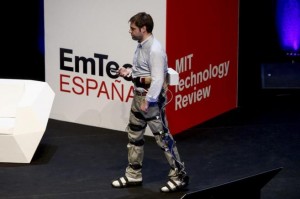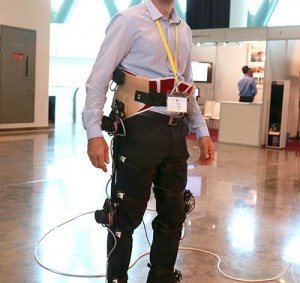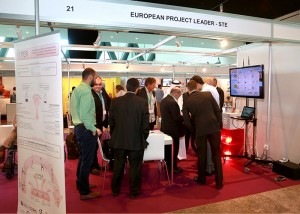Demonstration of H2 exoskeleton at ‘Cuarta Bienal Iberoamericana de Diseño’ (bid_14)
(see this new at elmundo.es)
(see more information about this event)
(see this new at innovaspain.com)
Demonstration of H2 exoskeleton at ‘Cuarta Bienal Iberoamericana de Diseño’ (bid_14)
(see this new at elmundo.es)
(see more information about this event)
(see this new at innovaspain.com)
NRGVideoPatient from NRG-CSIC
NRGVideoHealthy from NRG-CSIC
Los exoesqueletos robóticos, alternativa a la silla de ruedas
Entrevista a Juan C. Moreno – La futura solución para que los afectados por una lesión medular puedan volver a andar reside en “fármacos o trasplantes que reparen el daño neurológico, combinado con tecnologÃas como los exoesqueletos, que ayudan a guiar el movimiento y reaprender a andar de forma más fácil y cómoda†(ir a la noticia).

Vestidos con vida propia y exoesqueletos más inteligentes
Juan Moreno, responsable de la unidad de Locomoción del grupo de Rehabilitación Neural del Instituto Cajal CSIC, presentó el proyecto europeo en el que trabaja la institución para desarrollar un “exoesqueleto más Ãntimamente relacionado con humanos“. Su punto de partida es que «cierta inteligencia artificial es capaz de ofrecer adaptación a cada paciente de forma automática», lo que lo convierte en una herramienta mucho más eficaz (ir a la noticia).

“Cajal Institute at CSIC was represented as an exhibitor at RTEX 2014, where our lower limb robotics exoskeleton technologies was demonstrated. The exhibition attracted interest of both, professionals from various sectors (Universities, Hospitals, Investors), as well as the general public. The organization of the event was highly effective in facilitating all aspects related to the exhibition and the participation in seminars. For Cajal Institute it was a very positive contribution, which opened several cooperation opportunities in the area.”  – Prof. José L. Pons
 |
 |